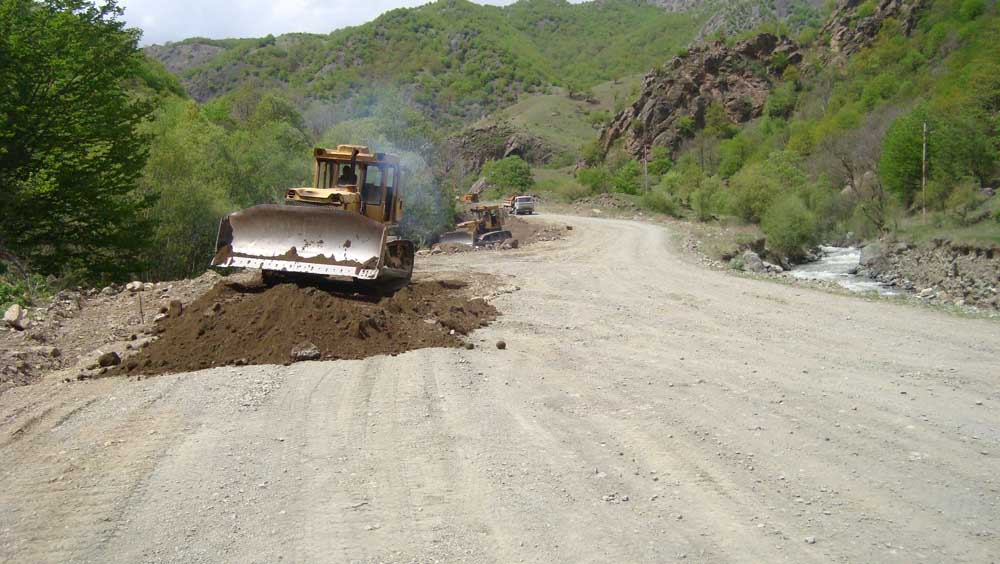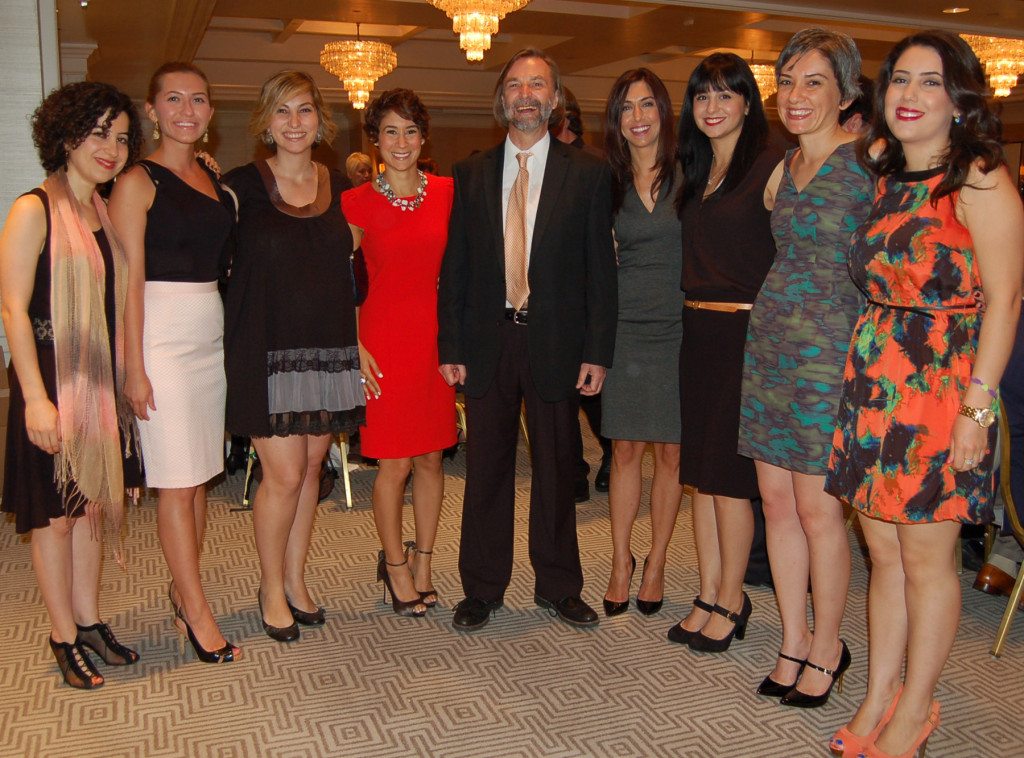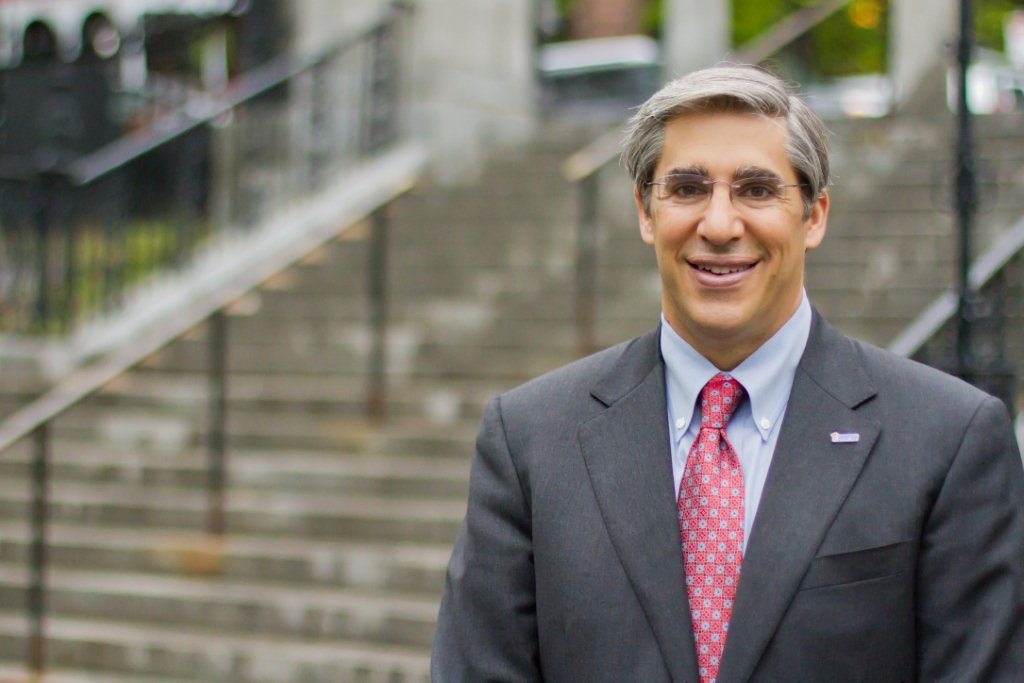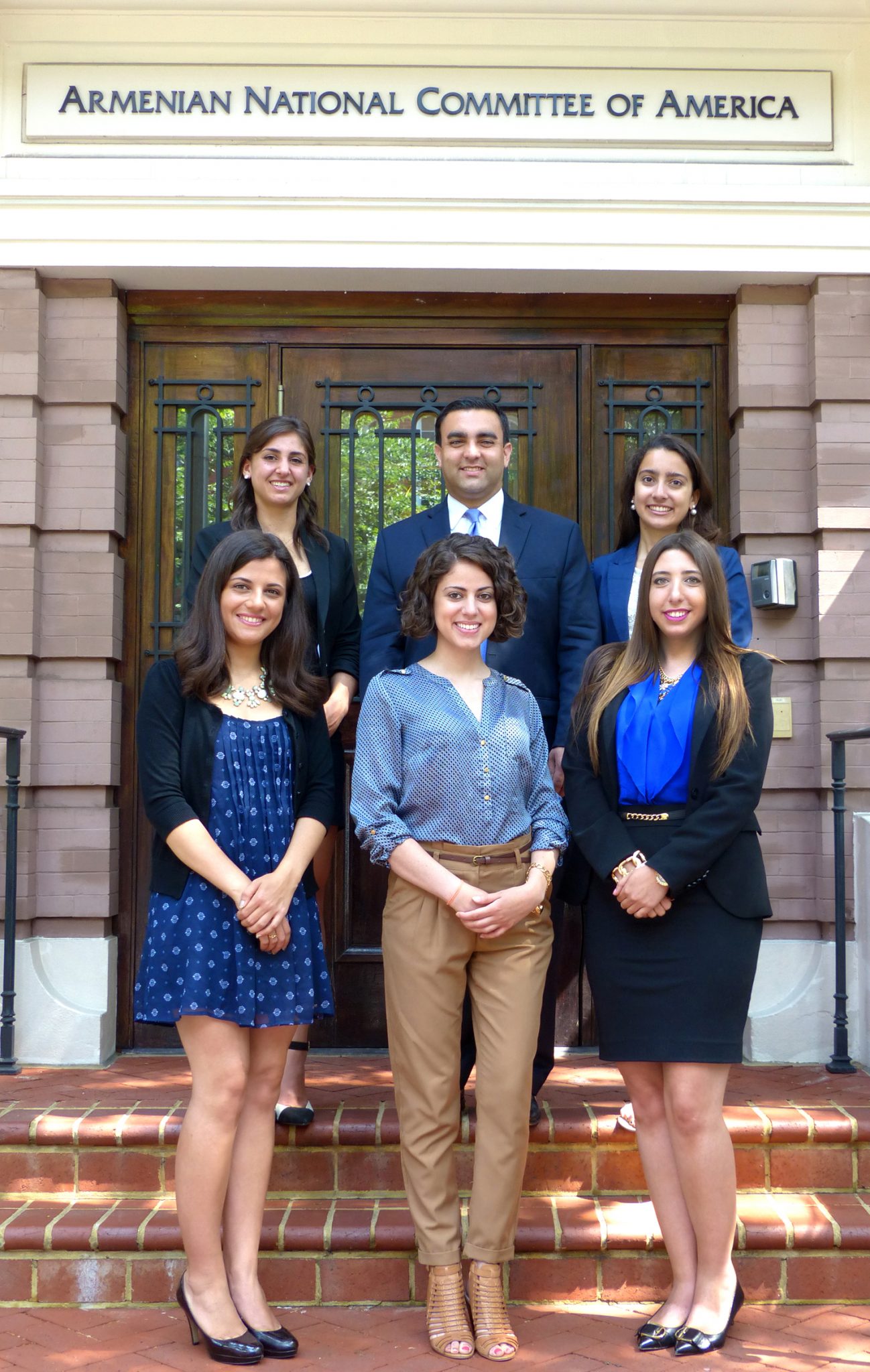More than 150 students from Armenian schools across the eastern United States participated in the Armenian Relief Society (ARS) Eastern USA’s Annual Essay Contest. The ARS sponsors the annual event for all ARS-sponsored one-day schools and every day schools, in an attempt to encourage students to think about topics of importance to the Armenian people and how issues may impact their young lives.
This year’s essay contest participants were asked to address the following question: “If you had the chance to visit Armenia during your summer vacation, what historical site would you want to visit and why?”
Participating Armenian one-day schools were Marzbed School, Racine, Wisc.; Mourad Saturday School, Providence, R.I.; St. Stephen’s Saturday School, Watertown, Mass.; Taniel Varoujan Armenian School, Glenview, Ill.; Nareg Saturday School, New Jersey; Zavarian Saturday School, Detroit, Mich.; and Haigazian School, Philadelphia, Pa.
Participating Armenian day schools were Armenian Sisters’ Academy, Lexington, Mass.; Holy Martyrs Armenian Day School (HMADS), Oakland Gardens, N.Y.; and St. Stephen’s Armenian Elementary School, Watertown, Mass.
Contest rules permit students to write their essay in English or Armenian. Students compete according to their grade and day school or one-day school participation. Essays written in Armenian and English are judged separately. Students’ names are never disclosed to the essay contest judges.
The 2014 essay judging committee was comprised of members of the ARS Chicago “Zabelle” Chapter and of the Chicago community. The judges were Anahid Sarrafian, Arpy Killian, Nairee Hagopian, Sanan Haroun, George Boursalian, and Talin Eugenis. The committee was led by Silva Bedian.
The ARS Eastern USA Board of Regional Directors extends hearty congratulations to all participating students for devoting time and effort to the ARS Essay Contest, and sends its gratitude to the principals and teachers for their cooperation in this mutually beneficial educational effort. Essay contest winners were awarded Amazon gift cards. (Shopping with Amazon allows the ARS to earn 0.5 percent of shoppers’ total purchase, by visiting smile.amazon.com and choosing the charity “ARS of Eastern USA.”)
Essay Contest Results
One-day schools (English)
Grades 3 and 4
1st place: Armen Surenian, Taniel Varoujan Armenian School
2nd place: Harry Torian, Taniel Varoujan Armenian School
3rd place: Talar Simon, Taniel Varoujan Armenian School
Honorary Mention: Alex Esenyan, Haigazian School
Grades 5 and 6
1st place: Zovenar Talarian and Ally Devedjian, Taniel Varoujan Armenian School
2nd place: Vahe Mouradian, Taniel Varoujan Armenian School, and Rozalin Sarkisian, St. Stephen’s Saturday School
3rd place: Teny Topouzian, ARS Zavarian Schools, and Alidz Khaligian, Marzbed Armenian School
Grades 7 and 8
1st place: Andrew Devedjian, Taniel Varoujan Armenian School, and Tamar Hovsepian, Haigazian School
2nd place: Lori Simonian, Mourad Saturday School
3rd place: Vanessa Kholamian, Taniel Varoujan Armenian School
One-day schools (Armenian)
Grades 3 and 4
1st place: Alex Varjabedian, Nareg Saturday School
Grades 5 and 6
1st place: Nayiri Ovannesian, Nareg Saturday School
2nd place: Isabella Terzian, St. Stephen’s Saturday School
3rd place: Talin Chaprazian, St. Stephen’s Saturday School
Honorary Mention: Aram Elmayan, Mourad Saturday School
Grades 7 and 8
1st place: Anahid Donoyan, Mourad Saturday School
2nd place: Taleen Donoyan, Mourad Saturday School
3rd place: Armen Yeghyaian, Mourad Saturday School
Everyday schools (English)
Grades 3 and 4
1st place: Gabriella Minasian, Armenian Sisters’ Academy, Lexington
2nd place: Ava Pioli, Armenian Sisters’ Academy
Grades 5 and 6
1st place: Peter Koutoujian and Adriana Minasian, Armenian Sisters’ Academy
2nd place: Michelle Ashbahian, HMADS
3rd place: Nikoletta Tavitian, Armenian Sisters’ Academy
Everyday schools (Armenian)
Grades 3 and 4
1st place: Alexander Hananian, Armenian Sisters’ Academy
2nd place: Arin Sullahian, Armenian Sisters’ Academy
3rd place: Ella Deirmenjian and Sevag Glorigian, Armenian Sisters’ Academy
Grades 5 and 6
1st place: Nicole Issagholian, HMADS, Oakland Gardens, NY
2nd place: Aleen Karakouzian, Armenian Sisters’ Academy, and Elizabeth Krmzian, St. Stephen’s Elementary School
3rd place: Ani Ourfalian and Lori Ganjian, St. Stephen’s Elementary School
Honorary Mention: Alicia Mordjikian, HMADS
Below are some of the winning essays:
Gabriella Minasian
Grade 3, Armenian Sisters’ Academy
If I could go anywhere in Armenia it would be Lake Sevan because it is the only one left of the three great lakes of historical Armenia. The other two lakes are Lake Van and Lake Urmia.
I choose Lake Sevan because Lake Sevan is very beautiful. Lake Sevan is still in Armenia. It has been there for many years. It is the largest lake in Armenia. It has man-made beaches all around it. It is surrounded by Keghama Mountains. Lake Sevan is considered one of the three great lakes of historical Armenia and it is the only one left today.
I want to see the three churches alongside the lake. I have a picture of Lake Sevan in my family room that reminds me of my homeland. There is a type of fish that only grows in Lake Sevan. It is called Ishkhan. I would love to taste that. I hope my wish will come true one day and I will visit my country Armenia.
Armen Sourenian
Grade 4, Taniel Varoujan Armenian School
If I were to go to Armenia and visit one place, I would visit Khor Virab. I would visit this place because it is very important to all Armenians. It is important because this is when us Armenians turned Christian. We used to be pagan so we worshiped the sun, fire, etc.
The king at that time was King Drtad. They were worshiping a Goddess one day and Drtad called his servant named Krikor. Drtad told Krikor to take presents and put it on the Goddess’s statue. Krikor refused because he believed in Christianity. The king got angry and he ordered to throw Kirkor in a deep hole. They left him to die there.
Little did the king know that Drtad’s sister was Christian as well. She was throwing in the hole bread and other things that would make him live. Meanwhile, the king was out on the streets killing every Armenian Christian in sight. Because of the bad things Drtad did, people believed he was punished by God and then Drtad got very sick. He was acting like he was an animal and running away from everyone. Drtad’s sister still cared about him and she really wanted him to be cured. The doctors tried everything they could to try and cure Drtad, but nothing worked.
Drtad’s sister was sleeping one night and she had a dream. In the dream, a man came to her in her dream, the man told her if she wanted Drtad to be cured, she responded yes. The man told her that there was only one person that could cure Drtad. That person would be Krikor, the man in the dungeon. That morning Drtad’s sister told a governor to go get Krikor from the dungeon. The governor wasn’t believing what Drtad’s sister was saying. The man told her that Krikor had to be dead because he has been in that hole for so long. Drtad’s sister knew that he had to be alive. She ordered him to go down. He did.
When they brought Krikor up he cured Drtad and the Armenians turned Christian. This is why I would go here. I wouldn’t be an Armenian Christian now if it wasn’t for this dungeon. I would be a pagan now if this didn’t happen, I wouldn’t be writing this if it didn’t happen. And the best part about going to Khor Virab is that you can see the beautiful Mt. Ararat from here. This is where I would go if I ever visited Armenia for vacation.
Zovenar Talarian
Grade 5, Taniel Varoujan Armenian School
There are many beautiful and important historical cities to visit in Armenia, but in my opinion if I were to go to Armenia and visit one of them it would be Dzidzernagapert. Dzidzernagapert was created in 1965. It is located on a hill which is overlooking Yerevan, Armenia. I would like to visit Dzidzernagapert because this historical site is dedicated to al of the Armenians who were victims and died in the Armenian Genocide. It is also a memorial for them. Every year on April 24, hundreds of thousands of Armenians visit Dzidzernagapert and remember all of those people who died on that tragic day.
The Dzidzernagapert monument has a fire in the middle of it that never runs out. The flames that never burn out represent the spirit of the Armenians and how even when a whole bunch of people died on the Armenian Genocide we still keep our culture and language alive. One portion of the monument is tall and is a needle-shaped shaft which represents the rebirth of the Armenian people. This historical site is very touching to many people who visit it.
The whole monument of Dzidzernagapert means “Citadel of Swallows” which is named for a bird that always returns to its nest even if its home has been destroyed, just like how the Armenians’ home got destroyed many times but we still keep going back to our homeland and keeping our language alive. Dzidzernagapert is a very, very important historical site not only to me but also many other Armenian people who visit it. So many people always ask me, “Zovenar, if you were to go to any historical site in Armenia what would it be,” and my answer would be and always will be Dzidzernagapert because it reminds me of how Armenians are always getting controlled by people and people are always trying to change us and yet we always win and we always get to keep our beautiful language and our culture alive. Dzidzernagapert is always reminding people of all of the people who died in the genocide and how we keep our language strong because of that day.
Peter Koutoujian
Grade 5, Armenian Sisters’ Academy
When I have the opportunity to visit Armenia, I want to see Karahunj. I want to visit this place because I want to know how they see the stars through a mound of rocks with a big hole in it. They thought if you look through the hole you can see all the stars in the night sky. There are stonehenges in England but now people are saying that the Armenian ones are older. Karahunj was built in 3000 B.C. It was built near Sisian in southern Armenia and was used as a fort in war time.
It was an observatory in the old days. It has been said that aliens visited Karahunj once. When I go there I will feel that Armenia is one of the oldest countries in the world and had some bad and sad times like the Armenian Genocide and other wars, but fought through them and are still living years later. And standing up alive like these stones.
The Karahunj stones are 3,500 years older than England’s stonehenges and 3,000 years older than the Egyptian pyramids. It also used to be a temple to worship Armenia’s main God Ari (meaning the sun). The stones sit like toy soldiers huddled together. The stones have been described with mystical and cosmic powers. That is why I want to visit this place.
Tamar Hovsepian
Grade 7, Haigazian School
The question is “If you could go to Armenia for one day, where would you go?” The answer does not come easy for someone like me who never visited Armenia and would like to go and visit very badly.
There are so many beautiful historical sites, sacred churches, and monuments in our homeland, Armenia, that I heard about and would love to see. However, there is one place that stands out for me: the Armenian Genocide Memorial at Tsitsernakaberd in Yerevan.
The Armenian Genocide Memorial is found in Yerevan and construction started in 1966 after 1 million Armenians demonstrated in Armenia on the 50th anniversary of the genocide. The construction of the monument was completed in 1968. Every year on April 24, thousands of Armenians from Armenia and around the world commemorate the anniversary of the genocide by laying flowers around the eternal flame. I have never been to Armenia, but when I do go, the first place I want to visit will be the Armenian Genocide Memorial because it will be the place where I will lay flowers and say our Lord’s Prayer “Hayr Mer” for the souls of my ancestors who perished away at the hands of the Turks.
I would like to see the Armenian Genocide Memorial in Yerevan, first because this memorial represents a sad and very emotional part of my ancestors’ history. I would want to go there to light a candle and say a prayer for my family members who had died during the genocide.
This genocide monument in Yerevan is dedicated to the memory of all my ancestors who perished in the first genocide of the 20th century at the hands of the Turkish government. This is a very painful history and human disaster and a very personal one for me because my great-grandparents and family members from both my mother and father’s side were victims of this terrible crime. They lost their lives, their farmland, and their homeland. Listening to very personal stories about genocide from my mom, who heard about it firsthand from her surviving grand-aunt, definitely makes me want to go and visit the Armenian Genocide Memorial to remember and pay my respect and honor the victims by lighting a candle and laying flowers on the ground, as so many millions of people did and will continue to do it.
Andrew Devedjian
Grade 7, Taniel Varoujan Armenian School
I’ve been asked multiple times by my friends on numerous occasions, “What does it mean to be Armenian?” It could be on April 24th or by simply seeing the Armenian flag as my cover photo on Facebook. Whenever that question comes up I can’t put it into words. I sometimes use William Saroyan’s quote of, “I should like to see any power of the world destroy this race. This small tribe of unimportant people whose wars have all been fought and lost and structures have crumbled. Literature is unread, music is unheard, and praises are no longer answered. Go ahead, destroy Armenia. See if you can do it. Send them into the desert without bread nor water, and see if they will not laugh, sing, or pray again. For if two of them meet anywhere in the world, see if they will not create a new Armenia.”
That quote gets the point across and how much willpower Armenians have, but there is so much more. Armenians have seen beyond the depths of hell, and have fought, stumbled, and fought again for symbols of what they believe makes them up. If I could go anywhere it would be Van where the Siege of Van happened, or where Lake Van is, or I would go to the Avarayr plains. All these places are coincidentally in one place…Vaspurakan. I would want to visit Vaspurakan in the summer because the province of Greater Armenia holds loud marks that showcase what it means to be Armenian.
Van, a beautiful place that may no longer be a part of Armenia but holds a landmark of no other, Lake Van. Stories upon stories surround this great lake. To any other person in the world it may be thought of as just a body of water, but to Armenians it’s a home that is no longer with them. I have grown up hearing of the town and of course the lake. I’ve heard stories of death and life like the Romeo and Juliet like tale of the prince who died in the lake. The historical sight is a place I could only dream of seeing, for Armenians for ages fought to protect this lake. Van holds not only this lake, but the entire town holds an event known as the Siege of Van.
Van is a great historical landmark for Armenians, but its beauty is not the only thing it has; the great city has seen battle after battle such as the Siege of Van. Lake Van makes up the beauty of being Armenian, but the Siege of Van represents the struggle and blood of what it means to be Armenian. On April 24, 1915 Armenia’s darkest days fell upon it. The extermination of all Armenians was ordered by the Ottomans. Death followed, with death marches, gun shots, and rape. It was chaos and heartbreak, but a few in Van refused. My first year at AYF Seminar, the director summed up what the select few said, “We will not go quietly into the night! We are going to live and we are going to survive! I refuse to die without a fight!”
With the stage set the men, women, and children of Van fought. They loved this town, they loved being Armenian, and they refused to give up, proving to the Turks that their version of being Armenian is to get up and fight. They fought and fought until their last man, but they lost and their town was taken. Yes the town was taken, but if anyone could say another word it would be, “It was worth it. I fought for my culture, my family, my country. For that I wouldn’t rather die any other way in this chaos.”
Van held beauty and the blood of Armenians, but now I would shift to the Avarayr plains of Vaspurakan. I can only imagine how many people didn’t think of this when this essay was announced, and this place may be a key reason why they are here today. Willpower to me is a central part of being Armenian, as William Saroyan’s quote explained to him as well. That willpower may come from the plains where Vartan Mamikonian gave his life. Persians surrounded him in his final battle, swords to his neck and arches all around. The Persians finally had the general of the resistance of Armenians wanting to stay Christian. There was no way out for Vartan, he would die. Any man would stop close his eyes and prepare to die, but he was not any man. He was Armenian. Vartan got on his knees and began to pray. The Persians exclaimed, “How could you pray, you are about to die and turn tour state polytheistic, and yet you pray to your God?” He died on the Avarayr plains with honor and showing the world how much willpower Armenians have.
Vaspurakan is a place I would want to visit over the summer for it is home to places that show what it means to be Armenian.
Beauty, blood, and willpower are three concepts and places that showcase what it means to be Armenian. Now can I say what it means to be Armenian by reading this essay or saying these places? No. While writing this I realized that the best part about being Armenian is the fact that so many different things make up the blood that flows through our veins. My sister Ally Devedjian wrote about an institution of knowledge as a place she wants to visit. She may think that the legacy of knowledge is what it means to be Armenian, while I think it’s willpower, while my friend Robert thinks it is the beauty of land marks. My three historical places I want to visit for different reasons are just a taste of what it means to be Armenian. Hundreds of ideas and different perspectives make me up and I will never and don’t really want to know all of them. The next time my friend asks me that question I hear all the time, I will say with a smile, “There is not enough paper, time, or Armenians in the world to answer that question. You can dig up and bring back to life a thousand Armenians and you still wouldn’t get an answer. The best part of being Armenian is trying to figure it out but never actually doing it, but at the same time not really wanting to know at all. What would be the fun in that?”
The post ARS Eastern USA Announces 2014 Annual Essay Contest Winners appeared first on Armenian Weekly.





































